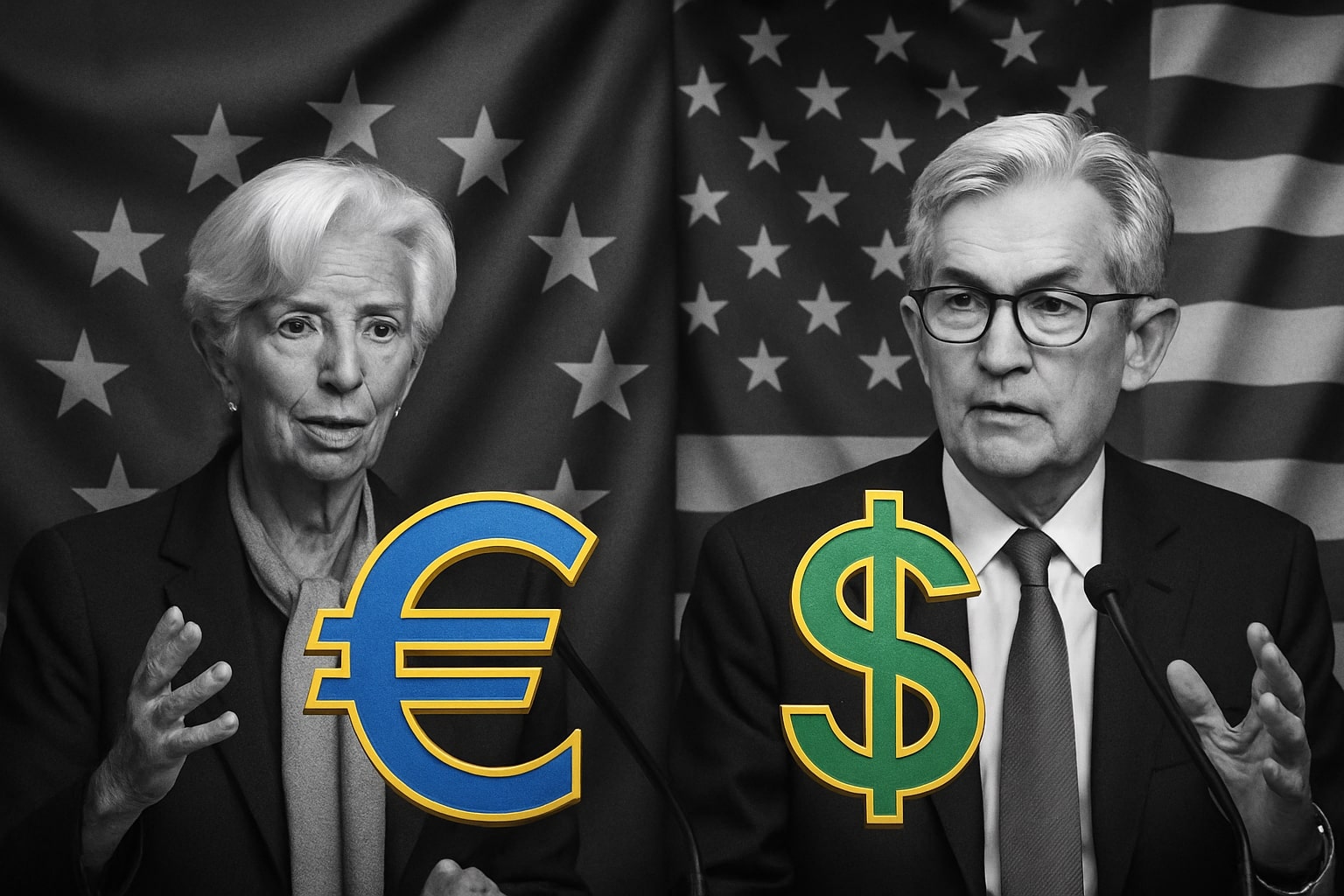
GBP/USD Price Forecast - Pound Slides to 1.3120 as UK Inflation Drops and BoE Rate Cut Bets Hit 85%
GBP/USD weakens for a fourth session as CPI falls to 3.6%, core inflation cools to 3.4%, and traders brace for the November 26 Autumn Budget | That's TradingNEWS
GBP/USD Faces Heavy Pressure As Inflation Cools And Fiscal Risks Mount
GBP/USD remains under aggressive selling pressure, trading around 1.3120, its lowest in a week, after a combination of softer UK inflation data, rising U.S. yields, and mounting domestic fiscal concerns. The pound has now fallen for four consecutive sessions, retreating from 1.3190 highs earlier this month as traders reposition for a December Bank of England (BoE) rate cut.
The Office for National Statistics (ONS) reported that headline CPI slowed to 3.6% year-over-year in October, down from 3.8% in September. Core CPI fell to 3.4%, its weakest reading since March 2023, and services inflation eased to 4.5% from 4.7%. These data confirm that inflation is cooling faster than expected, giving the BoE room to ease monetary policy for the first time since March 2020.
Money markets now price an 85% probability of a 25-basis-point rate cut at the BoE’s December meeting. This shift has pushed gilt yields lower and flattened the yield curve. The 2-year gilt yield dropped to 4.11%, down nearly 20 basis points in a week, reflecting growing confidence that policy tightening is over.
UK Fiscal Uncertainty Deepens As Autumn Budget Looms
The upcoming Autumn Budget on November 26 is fueling renewed pressure on the pound as concerns rise over fiscal credibility. Chancellor Rachel Reeves faces a widening funding gap estimated near £30 billion, largely due to slower growth and weaker tax receipts. Reports suggest the government may abandon planned income tax hikes, raising fears of deeper deficits.
Bond traders have already started demanding a higher risk premium for holding UK debt. The 10-year gilt yield rose back toward 4.30% earlier in the week before easing on CPI data, and credit default swaps on UK sovereign debt ticked up to 21 basis points, their highest since February.
Investors remain unconvinced the government can maintain fiscal discipline while balancing political commitments to healthcare and infrastructure spending. This uncertainty, paired with the BoE’s dovish shift, has turned sterling into one of the weakest G10 currencies this month.
U.S. Dollar Strength Caps Any Recovery In GBP/USD
The U.S. Dollar Index (DXY) climbed back to 105.7, driven by hawkish Federal Reserve commentary and declining odds of near-term rate cuts. The CME FedWatch Tool now assigns just a 49% probability of a December cut, down from 67% a week earlier. Fed officials including Thomas Barkin and John Williams reiterated that inflation remains “off track” from the 2% target.
Initial jobless claims rose slightly to 232,000, while the ADP report showed modest job gains, suggesting continued labor-market resilience. Traders are awaiting the Fed minutes and Nonfarm Payrolls (NFP) data on Thursday, with expectations centered around 50,000 new jobs.
A stronger labor print could push U.S. Treasury yields even higher, reinforcing dollar strength and deepening pressure on GBP/USD, which has already declined 0.6% this week.
Technical Breakdown Shows 1.3070 As Key Support Zone
Technically, GBP/USD remains in a confirmed downtrend. The pair has broken below its short-term trendline support and now trades near 1.3120, testing the 0.236 Fibonacci retracement level, a key pivot area. Momentum indicators confirm bearish bias — the Relative Strength Index (RSI) sits at 46, showing weak recovery potential, and the pair remains below all major moving averages.
If sellers extend control and GBP/USD breaks below 1.3100, the next targets lie at 1.3084 and 1.3048, followed by the early-November cycle low of 1.3010.
Upside attempts remain capped near 1.3173 (20-day SMA) and 1.3200 (psychological barrier). A clean move above 1.3200 would require a dovish Fed or a surprisingly tight UK Budget, both currently unlikely.
Market Positioning Reflects Deep Skepticism Toward Sterling
According to CFTC data, speculative long positions in GBP have dropped 19% over the last two weeks, while shorts have risen to a five-month high. Hedge funds and macro funds continue to unwind GBP exposure as the interest-rate differential versus the U.S. widens. The GBP 1-month implied volatility climbed to 8.7%, reflecting hedging demand ahead of the Autumn Budget and key U.S. data releases.
Liquidity in GBP futures has also thinned, suggesting many traders are avoiding aggressive positioning until after next week’s events. However, the balance of risk remains skewed to the downside, particularly if U.S. yields remain firm above 4.4%.
Macro Divergence Between BoE And Fed Drives Policy Spread
While the BoE edges toward its first cut, the Fed continues to hold its ground. The Fed Funds Rate remains anchored between 5.25%–5.50%, while BoE’s base rate stands at 5.25%. However, swaps markets price two cuts from the BoE by mid-2026 versus only one from the Fed, widening the forward rate spread in favor of the dollar.
The divergence has driven GBP/USD down over 3.2% month-to-date, from highs near 1.3550 in late October. Every bounce remains shallow, confirming that market participants are unwilling to fight a trend reinforced by macro policy differentials and fiscal uncertainty.
Upcoming Data And Event Risks For GBP/USD
Traders now focus on high-impact data from both sides of the Atlantic. Friday’s UK and U.S. PMI releases will gauge near-term momentum in manufacturing and services. Weak UK PMIs — expected to remain below 50.5 — could reinforce the bearish narrative. Meanwhile, the U.S. FOMC minutes and NFP report could trigger a decisive break below the 1.3100 zone if both reaffirm U.S. economic resilience.
The Autumn Budget on November 26 will be pivotal. Any signal that the Treasury plans to expand borrowing could accelerate gilt sell-offs and send GBP/USD below 1.3050, possibly testing 1.2950 by early December.
Read More
-
FUTY ETF Outperforms S&P 500 as Utilities Surge — Analysts See 25% Upside
19.11.2025 · TradingNEWS ArchiveStocks
-
XRP ETFs XRPI and XRPR Drop as XRP-USD Holds $2.00 — $128M ETF Inflows Signal 35% Upside Potential
19.11.2025 · TradingNEWS ArchiveCrypto
-
Natural Gas Price (NG=F) Rallies 5% to $4.55 as Winter Cold and LNG Flows Ignite Bullish Momentum
19.11.2025 · TradingNEWS ArchiveCommodities
-
USD/JPY Price Forecast - Yen Rallies to 156.54 as Rising JGB Yields
19.11.2025 · TradingNEWS ArchiveForex
Technical and Macro Assessment: Bearish Bias Prevails
The confluence of soft inflation, fiscal strain, and dollar resilience leaves the technical and fundamental outlook for GBP/USD aligned to the downside.
Price action suggests sustained weakness as long as 1.3200 holds as resistance. Momentum traders target a slide toward 1.3000, while medium-term investors remain cautious ahead of UK fiscal updates.
The macro narrative is unambiguous — disinflation in the UK, higher U.S. yields, and widening policy divergence all point toward continued pressure on the pound.
Verdict: Sell Bias — GBP/USD remains vulnerable below 1.3200, targeting 1.3050 and 1.2950 near term.
Sterling’s recovery requires either a surprisingly hawkish BoE or softer U.S. labor data, both of which remain improbable given the current macro alignment. The balance of risk stays firmly in favor of the dollar.



















